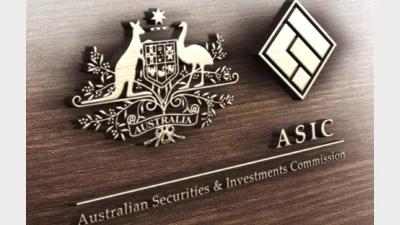Super funds ride broad-based market rally
Superannuation funds have posted another year of strong returns, but this time, the gains weren’t powered solely by Silicon Valley.
In contrast to the tech-led surge of FY2023–24, the past year has seen a broader uplift across asset classes, with domestic equities, infrastructure, and global markets beyond the US all contributing meaningfully to performance.
“In contrast to previous years, which have been dominated by US tech, the strong performance was much broader,” UniSuper chief investment officer John Pearce told Super Review sister brand InvestorDaily. “Solid returns in listed equities were recorded in all major markets, and unlisted assets also contributed.”
Australian Retirement Trust’s head of investment strategy, Andrew Fisher, echoed the sentiment, highlighting a return to home-ground advantage.
“In the most recent financial year, it was more of a domestic exposure. Australian equities and domestic infrastructure were two of the biggest drives of that relative outperformance,” Fisher shared with InvestorDaily.
A different kind of rally
The financial year ending 30 June 2025 was shaped by a more diversified growth profile across asset classes, helping both retail and industry super funds deliver resilient results despite geopolitical instability and concerns around inflation persistence.
AustralianSuper and Cbus both posted strong returns, with gains underpinned by global equities and continued strength in local shares.
For AustralianSuper, it marked a rebound from last year’s relative underperformance, when peers with heavier US tech exposure pulled ahead.
Its chief investment officer (CIO) Mark Delaney said global and domestic equities were “significant drivers of returns” in 2024–25, as AI and technology investments continued a three-year trend of boosting equity markets.
“We maintained our diversified portfolio while also capitalising on good growth in share markets,” he said, adding that the outcome for members was good considering the “complex investing environment”.
Retail funds also had a strong year, with AMP attributing its outperformance to a well-timed tilt toward US equities.
“From December to June, our portfolios had a tactical overweight to US equities, which saw strong returns as our funds continued to outperform their benchmarks,” said Anna Shelley, chief investment officer at AMP.
Shelley said the approach was further supported by positive active asset allocation and strong security selection by underlying managers, many of whom had positioned early for the strong surge in AI adoption across both US and global markets.
Jonathan Armitage, CIO at Colonial First State, much like his peers, gave a nod to the star performers this year, global and domestic equities, which really turbocharged the fund’s returns.
“The strength of global share markets has really been the core driver of investment returns over the last 12 months,” Armitage said.
Infrastructure and alternatives shine
One of the standout contributors to super fund performance this year was infrastructure.
Data centres, airports, and renewable energy assets featured prominently in commentary from chief investment officers, reflecting both strong returns and exposure to long–term structural themes. ART’s Fisher pointed to investments like AirTrunk as headline performers, underpinned by growing demand for digital infrastructure and the ongoing energy transition.
Cbus CIO Leigh Gavin also cited robust returns across infrastructure and private credit, alongside early signs of a recovery in property markets.
Rest similarly pointed to solid gains in energy infrastructure – including renewables – alongside the benefits of a well-diversified, long-term approach.
Can the momentum hold?
Despite the back-to-back strong years, funds are preparing for more muted returns ahead.
ART’s Fisher said while double-digit returns may not be realistic, the fund is confident it can achieve at least an 8 per cent return for next year.
“Interest rates remain relatively attractive and bond yields look quite good relative to interest rates,” he said.
“Equities look reasonably good other than a few overpriced stocks and a bit of concentration in some markets. We’re also confident that unlisted assets will [be able to generate] strong yields.
“We’re going into this new financial year relatively optimistic.”
AMP’s chief economist Shane Oliver also offered a note of caution, highlighting several risks that could test market resilience. As a result, he expects returns to come in around 6–7 per cent over the next 12 months.
Topping Oliver’s list of concerns is the escalation of US tariffs – news that has gained momentum in recent days.
Recommended for you
The Gateway Network Governance Body has unveiled a detailed roadmap to guide the superannuation industry through the upcoming Payday Super reforms.
CPA Australia urges the ATO to extend compliance support for small businesses facing major system changes ahead of Payday Super reforms.
Superannuation funds ramp up collective efforts to counter rising cybercrime, updating standards and sharing intelligence across the industry.
The regulator has fined two super funds for misleading sustainability and investment claims, citing ongoing efforts to curb greenwashing across the sector.









